THE HOW CAN IT BE
GLUTEN FREE COOKBOOK
Revolutionary Techniques.
Groundbreaking Recipes.
BY THE EDITORS AT
Americas Test Kitchen
Copyright 2013
by the Editors at Americas Test Kitchen
All rights reserved. No part of this book may be reproduced or transmitted in any manner whatsoever without written permission from the publisher, except in the case of brief quotations embodied in critical articles or reviews.
AMERICAS TEST KITCHEN
17 Station Street, Brookline, MA 02445
Library of Congress
Cataloging-in-Publication Data
The how can it be gluten free cookbook : revolutionary techniques, groundbreaking recipes / by the editors at Americas Test Kitchen. -- 1st ed.
pages cm
Includes index.
Kindle ISBN: 978-1-936493-89-0
ISBN 978-1-936493-61-6
1. Gluten-free diet--Recipes. 2. Gluten-free foods. I. Americas Test Kitchen (Firm)
RM237.86.U48 2014
641.3--dc23
2013038636
Manufactured in the United States of America
10 9 8 7 6 5 4 3 2 1
Paperback: $26.95 US
Distributed by Americas Test Kitchen
17 Station Street, Brookline, MA 02445
EDITORIAL DIRECTOR: Jack Bishop
EDITORIAL DIRECTOR, BOOKS: Elizabeth Carduff
EXECUTIVE FOOD EDITOR: Julia Collin Davison
SENIOR EDITOR: Louise Emerick and Suzannah McFerran
EDITORIAL ASSISTANT: Melissa Herrick
TEST COOKS: Danielle DeSiato-Hallman, Sara Mayer, and Stephanie Pixley
ASSISTANT TEST COOK: Meaghen Walsh
DESIGN DIRECTOR: Amy Klee
ART DIRECTOR: Greg Galvan
DESIGNERS: Taylor Argenzio and Allison Pfiffner
PHOTOGRAPHY: Carl Tremblay
STAFF PHOTOGRAPHER: Daniel J. van Ackere
ADDITIONAL PHOTOGRAPHY: Steve Klise
PHOTO EDITOR: Steve Klise
FOOD STYLING: Daniel Cellucci and Marie Piraino
PHOTOSHOOT KITCHEN TEAM:
ASSOCIATE EDITOR: Chris OConnor
TEST COOK: Daniel Cellucci
ASSISTANT TEST COOK: Cecilia Jenkins
ILLUSTRATIONS: Jay Layman
PRODUCTION DIRECTOR: Guy Rochford
SENIOR PROJECT MANAGER: Jessica Quirk
PROJECT MANAGEMENT DIRECTOR: Alice Carpenter
PRODUCTION AND TRAFFIC COORDINATORS: Brittany Allen and Britt Dresser
WORKFLOW AND DIGITAL ASSET MANAGER: Andrew Mannone
SENIOR COLOR AND IMAGING SPECIALIST: Lauren Pettapiece
PRODUCTION AND IMAGING SPECIALISTS: Heather Dube and Lauren Robbins
COPYEDITOR: Jeff Schier
PROOFREADER: Ann-Marie Imbornoni
INDEXER: Elizabeth Parson
COVER:
Welcome to the Test Kitchen
This book has been tested, written, and edited by the folks at Americas Test Kitchen, a very real 2,500-square-foot kitchen located just outside of Boston. It is the home of Cooks Illustrated magazine and Cooks Country magazine and is the Monday-through-Friday destination for more than three dozen test cooks, editors, food scientists, tasters, and cook-ware specialists. Our mission is to test recipes over and over again until we understand how and why they work and until we arrive at the best version.
We start the process of testing a recipe with a complete lack of conviction, which means that we accept no claim, no theory, no technique, and no recipe at face value. We simply assemble as many variations as possible, test a half-dozen of the most promising, and taste the results blind. We then construct our own hybrid recipe and continue to test it, varying ingredients, techniques, and cooking times until we reach a consensus. The result, we hope, is the best version of a particular recipe, but we realize that only you can be the final judge of our success (or failure). As we like to say in the test kitchen, We make the mistakes, so you dont have to.
All of this would not be possible without a belief that good cooking, much like good music, is indeed based on a foundation of objective technique. Some people like spicy foods and others dont, but there is a right way to saut, there is a best way to cook a pot roast, and there are measurable scientific principles involved in producing perfectly beaten, stable egg whites. This is our ultimate goal: to investigate the fundamental principles of cooking so that you become a better cook. It is as simple as that.
If youre curious to see what goes on behind the scenes at Americas Test Kitchen check out our daily blog, AmericasTestKitchenFeed.com, which features kitchen snapshots, exclusive recipes, video tips, and much more. You can watch us work (in our actual test kitchen) by tuning in to Americas Test Kitchen (AmericasTestKitchen.com) or Cooks Country from Americas Test Kitchen (CooksCountryTV.com) on public television. Tune in to Americas Test Kitchen Radio (AmericasTestKitchen.com) on public radio to listen to insights, tips, and techniques that illuminate the truth about real home cooking. Want to hone your cooking skills or finally learn how to bake from an Americas Test Kitchen test cook? Enroll in a cooking class at our online cooking school at OnlineCookingSchool.com. And find information about subscribing to Cooks Illustrated magazine at CooksIllustrated.com or Cooks Country magazine at CooksCountry.com. Both magazines are published every other month. However you choose to visit us, we welcome you into our kitchen, where you can stand by our side as we test our way to the best recipes in America.
 facebook.com/AmericasTestKitchen
facebook.com/AmericasTestKitchen
 twitter.com/TestKitchen
twitter.com/TestKitchen
 youtube.com/AmericasTestKitchen
youtube.com/AmericasTestKitchen
 instagram.com/TestKitchen
instagram.com/TestKitchen
 pinterest.com/TestKitchen
pinterest.com/TestKitchen
 americastestkitchen.tumblr.com
americastestkitchen.tumblr.com
 google.com/+AmericasTestKitchen
google.com/+AmericasTestKitchen
Preface
Let me start with the sad truth. The vast majority of gluten-free recipes either do not work or the results are so second-rate that you would be hard-pressed to eat them. Muffins are gritty and crumbly. Cookies spread all over the baking sheet. Cakes are dense, gummy, and overly sweet. Pizza crusts are cracker-like. And, in general, baked goods are greasy.
Gluten-free cooking represents the pinnacle of recipe development since replacing wheat flour is tricky business. Gluten is formed when two wheat flour proteinsglutenin and gliadinform cross links when they are hydrated. This creates gluten, a protein that stretches to hold gas and therefore provides lift during baking. It also produces good chew.
Unfortunately, simply substituting a gluten-free flour blend for regular flour doesnt work. We needed to completely rethink each and every recipe, employing a host of tricks and techniques to get the results we wanted. We started with our own unique blend of flours and starches. (You can use gluten-free flour blends made by King Arthur or Bobs Red Mill if you like, although in some instances the results will be a bit different.)
Our first discovery was that some batters, such as those for quick breads, are best mixed vigorously instead of gently, breaking all the usual rules. We also found that many batters and doughs are better when rested for 30 minutes; this eliminated grittiness in the final baked goods. It also provided more time for the starches in the gluten-free flour blend to absorb liquid, which helps texture.



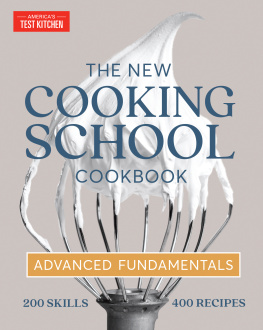

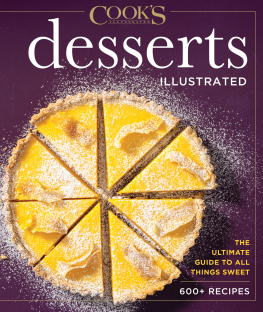
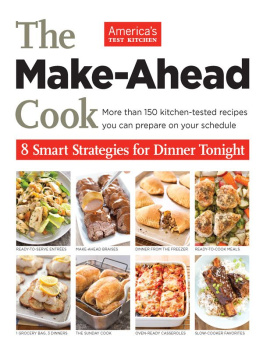

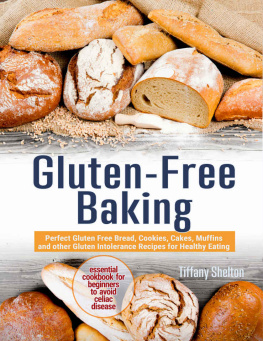
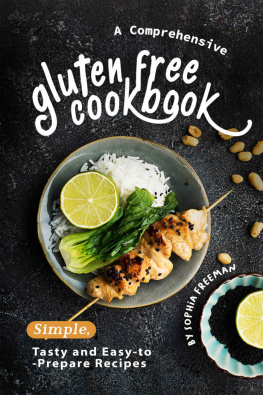
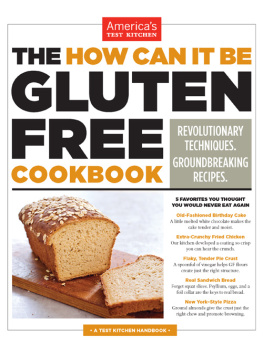
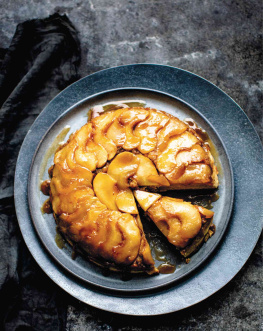
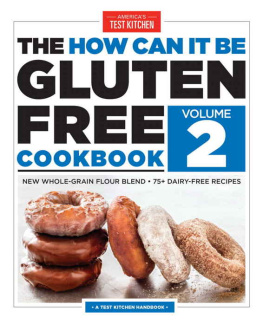
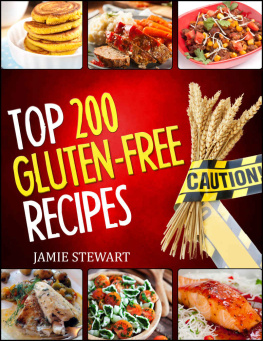
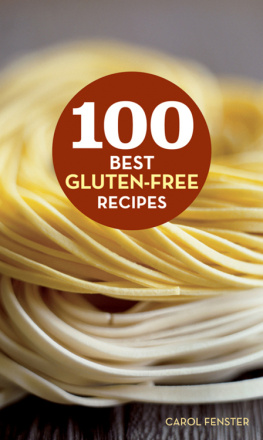
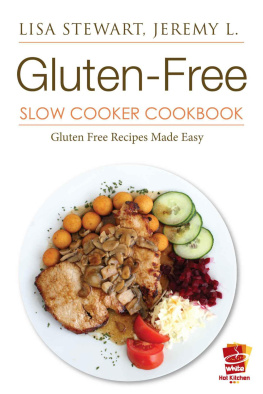
 facebook.com/AmericasTestKitchen
facebook.com/AmericasTestKitchen twitter.com/TestKitchen
twitter.com/TestKitchen youtube.com/AmericasTestKitchen
youtube.com/AmericasTestKitchen instagram.com/TestKitchen
instagram.com/TestKitchen pinterest.com/TestKitchen
pinterest.com/TestKitchen americastestkitchen.tumblr.com
americastestkitchen.tumblr.com google.com/+AmericasTestKitchen
google.com/+AmericasTestKitchen